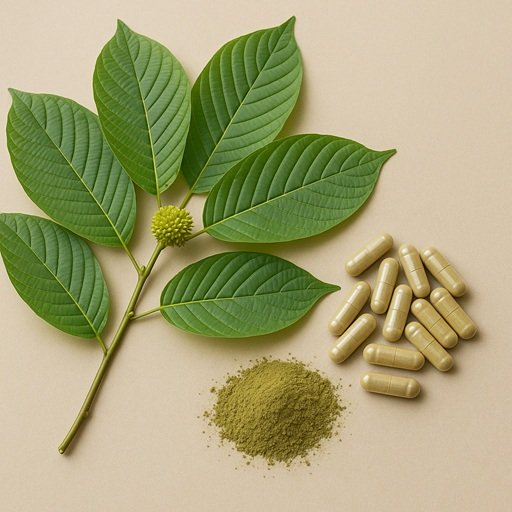
Kratom (Mitragyna speciosa), a tropical tree originating from Southeast Asia, has ignited extensive discussion and differing opinions among healthcare professionals, lawmakers, and the general populace. The essence of this discourse focuses on the safety, pharmacological properties, and regulatory measures related to kratom.
**Understanding Kratom’s Pharmacology**
Mitragynine and 7-hydroxymitragynine (7-OH), the chief alkaloids found in kratom, are frequently misinterpreted as strong opioids similar to morphine or fentanyl. Mitragynine functions primarily as a partial agonist at the mu-opioid receptor, demonstrating lesser opioid effects when juxtaposed with prescription opioids. Although 7-OH is more powerful, its presence in kratom leaves is scant, rendering its impact negligible in comparison to manufactured opioids. Notably, mitragynine does not produce substantial euphoria or respiratory depression, indicating that kratom’s safety profile is distinct from that of conventional opioids.
**Disambiguating 7-Hydroxymitragynine**
7-OH is sometimes isolated or synthesized, which may lead to levels significantly higher than those found naturally in kratom leaves. Confusing high amounts of 7-OH with typical kratom usage distorts the understanding of kratom’s effects and associated risks.
In 2025, the FDA emphasized this difference, concentrating on the regulation of concentrated 7-OH rather than the natural kratom leaf.
**Addiction, Dependence, and Kratom**
The possibility of addiction and withdrawal associated with kratom has been vigorously debated. Nonetheless, existing clinical evidence indicates that kratom dependence is not equivalent to opioid use disorder. While tolerance can develop, particularly with excessive use, symptoms generally appear mild and not life-threatening. This difference highlights the necessity of distinguishing between dependence and addiction.
**Evaluating Psychiatric Risks**
Worries regarding kratom’s psychiatric impacts, including infrequently reported cases of psychosis, necessitate a contextual perspective. Most cases involve the use of multiple drugs or existing psychiatric issues. Research consistently indicates no significant link between kratom usage and the onset of serious psychiatric disorders.
**Regulatory Measures and Consumer Safety**
A prohibitive stance on kratom may inadvertently encourage underground markets, increasing the risk of compromised products. The Kratom Consumer Protection Act (KCPA), enacted in several regions, provides a reasonable regulation framework—ensuring safety through rigorous contaminant thresholds, precise product labeling, and age limitations.
**Recommendations for Responsible Kratom Policy**
Fostering an informed, evidence-based comprehension of kratom is vital. Ongoing research into kratom’s potential advantages and hazards is essential, alongside the implementation of regulatory strategies prioritized by the KCPA. Promoting an open conversation rooted in scientific evidence rather than anxiety will contribute to forming a rational approach to kratom policy.
**Conclusion**
Debates surrounding kratom should emphasize science over sensationalism, acknowledging kratom as a distinctive botanical instead of a typical opioid. A sophisticated grasp of 7-OH’s pharmacology is crucial for effective policymaking. Appropriate regulation and evidence-based education can safeguard consumers, enabling kratom to assist those who gain from its responsible application without unnecessary punitive actions.